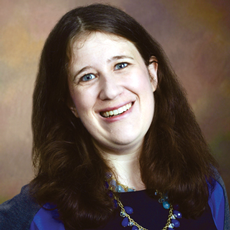
For those of us who are Jewish, Rosh Hashanah and Yom Kippur, which was Wednesday, are times when we take stock of our lives, repent, and look forward.
Many of the sermons we hear are universal. One story in particular, told by my rabbi, that made me think about the long-term care community.
It’s the story of a man who goes to minyan everyday — that’s a quorum of 10 men (or, depending on how progressive you are, women) over the age of 13, and it’s required for traditional Jewish public worship.
One day there’s a blizzard and the man can’t leave his house. He sits in front of his fire with his coffee and his thoughts, and thinks that it’s rather pleasant to spend some time alone. The next day, the snow’s still bad and he stays put. The days go on and the man can get out, but he’s really digging the fireplace reflection time. Who among us hasn’t thought, “Wow, a moment of quiet.”
Then the rabbi arrives. He doesn’t say anything but goes to the man’s fireplace. He takes a poker and pulls out a coal. The coal originally glows very hot, but starts to die out — until the rabbi pushes the coal back into the fire, where it reignites.
The man looks at the rabbi and says, “I’ll be at minyan tomorrow.”
You can read the whole sermon from the stellar Rabbi Andrea Cosnowsky here. While she was demonstrating the importance of staying connected to the Jewish community, in many ways we can apply the lesson to our industry.
Let’s take three major conferences — the American Health Care Association/National Association of Assisted Living, the NIC Fall Conference and LeadingAge — coming up next month. For many of us, those conferences aren’t only where we hear from expert speakers and see the latest products. It’s also where we see our contacts.
Long-term care isn’t easy. It’s not only the battles over funding and regulations. The work is physically and emotionally demanding.
Ironically, we talk about community every day as we talk about resident care, specifically the importance of battling isolation and depression. Yet many of us look at the slate of conferences and start making lists in our head. Who can our facility spare for a few days, and how much will it cost? Will there be new information? Can I leave my family without someone ending up in the ER? Can I make it back in time for trick-or-treating? Is there actual value in finding time to visit expo booths, which can be hard, and make small talk with strangers, which can be even harder?
Can’t I just use the time to sit in front of my fireplace and drink some coffee?
Trust me, I get it. Even the most extroverted among us often come back from these shows hoarse, worn out and in search of a stiff beverage.
But I thrive on the days I spend talking to everyone at these shows. You tell me about your new projects, answer our questions, and remind me of how many good people there are in the industry. Even as the occasional rah-rahness of some sessions might generate some eye-rolling, it provides a balance to the sad or negative news we often must face.
In the sermon, the rabbi was showing the man what Hillel said in Pirkei Avot (2:5), “Al tifrosh min ha tzibbur” — “Don’t separate yourself from the community.” For eldercare professionals, there’s nothing that can replace face-to-face contact and the chance to be a part of your community in real time.
So if you’re on the fence about visiting one of these conferences, take stock of whether you can swing it. You will likely find if you do, you’ll feel reignited.
Follow Senior Editor Elizabeth Newman @TigerELN.




